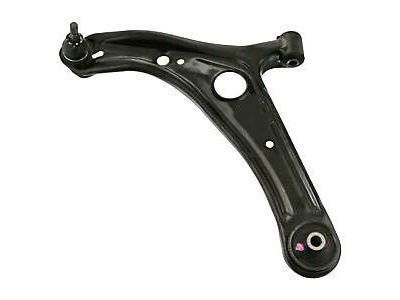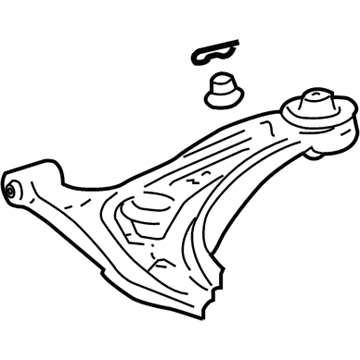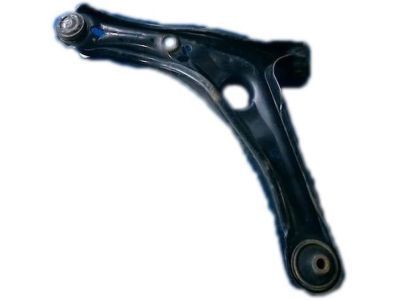×
ToyotaParts- Hello
- Login or Register
- Quick Links
- Live Chat
- Track Order
- Parts Availability
- RMA
- Help Center
- Contact Us
- Shop for
- Toyota Parts
- Scion Parts
My Garage
My Account
Cart
OEM 2002 Toyota MR2 Spyder Control Arm
Suspension Arm- Select Vehicle by Model
- Select Vehicle by VIN
Select Vehicle by Model
orMake
Model
Year
Select Vehicle by VIN
For the most accurate results, select vehicle by your VIN (Vehicle Identification Number).
2 Control Arms found

2002 Toyota MR2 Spyder Lower Control Arm, Driver Side
Part Number: 48069-19156$257.08 MSRP: $367.06You Save: $109.98 (30%)Ships in 1-3 Business DaysProduct Specifications- Other Name: Arm Sub-Assembly, Suspension; Suspension Control Arm, Front Left; Control Arm Assembly; Arm Sub-Assembly, Front Suspension, Lower Driver Side; Control Arm
- Position: Lower Driver Side
- Replaces: 48069-19155
- Part Name Code: 48069
- Item Weight: 9.30 Pounds
- Item Dimensions: 18.2 x 12.3 x 4.6 inches
- Condition: New
- Fitment Type: Direct Replacement
- SKU: 48069-19156
- Warranty: This genuine part is guaranteed by Toyota's factory warranty.

2002 Toyota MR2 Spyder Lower Control Arm, Passenger Side
Part Number: 48068-19176$257.08 MSRP: $367.06You Save: $109.98 (30%)Ships in 1-3 Business DaysProduct Specifications- Other Name: Arm Sub-Assembly, Suspension; Suspension Control Arm, Front Right; Control Arm Assembly; Arm Sub-Assembly, Front Suspension, Lower Passenger Side; Control Arm
- Position: Passenger Side
- Replaces: 48068-19175
- Part Name Code: 48068
- Item Weight: 9.30 Pounds
- Item Dimensions: 18.1 x 12.4 x 4.5 inches
- Condition: New
- Fitment Type: Direct Replacement
- SKU: 48068-19176
- Warranty: This genuine part is guaranteed by Toyota's factory warranty.
2002 Toyota MR2 Spyder Control Arm
Looking for affordable OEM 2002 Toyota MR2 Spyder Control Arm? Explore our comprehensive catalogue of genuine 2002 Toyota MR2 Spyder Control Arm. All our parts are covered by the manufacturer's warranty. Plus, our straightforward return policy and speedy delivery service ensure an unparalleled shopping experience. We look forward to your visit!
2002 Toyota MR2 Spyder Control Arm Parts Q&A
- Q: How to service and repair the rear control arm on 2002 Toyota MR2 Spyder?A: The servicing and repairing process of the rear control arm begins with removing the engine under covers. Researchers should detach the strut rod by removing its 2 bolts and 2 nuts without twisting the nuts and torquing the bolts to 78 Nm (796 kgf-cm, 58 ft. lbs.) when stabilizing the suspension for installation. You must start the No. 1 lower suspension arm removal by removing two bolts and two nuts while torquing bolt A to 87 Nm (887 kgf-cm, 64 ft. lbs.) and bolt B to 103 Nm (1,051 kgf-cm, 76 ft. lbs.), making sure to not turn the nuts and torque them after stabilizing the suspension during installation. Place matchmarks on the cam plate and suspension member of the No. 2 lower suspension arm before removing its nut and cam plate and cam bolt. Install while stabilizing the suspension and torque the components to 87 Nm (887 kgf-cm, 64 ft. lbs.). A new nut should be installed before stabilizing the suspension and torquing with 49 Nm (500 kgf-cm, 36 ft. lbs.). The Special Service Tool: 09610-20012 should be used for No. 2 lower suspension arm extraction. The wheel alignment check should be conducted following installation after executing removal in reverse order.














